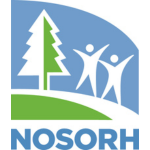By Beth Blevins
With an increasing shortage of rural healthcare workers, Iowa needs to recruit locally and early. That’s the idea behind the Opportunities in Health Sciences: Iowa Career Pathways, which helps high school students (and adult workers who are looking for a career change) navigate toward healthcare careers.
The Opportunities in Health Sciences project came about through the efforts of the Iowa State Office of Rural Health (IA SORH), which saw the need to recruit rural students to work in rural areas. The impetus for the project was a one-day workforce summit Iowa SORH held two years ago to gather information about the shortages and needs of the healthcare workforce in Iowa.
“Some of the recommendations at the summit came from people working at hospitals and clinics,” said Megan Hartwig, Iowa SORH Director. “Their concern was that we recruit students in healthcare careers but they end up leaving rural communities to work in urban centers. Or some rural schools don’t have the capacity to provide the curricula or experiences the kids need to help them consider further training and education in the health field.”
What followed was a discussion on how to do a better job of communicating with Iowa high school students, how to provide resources to counselors so they can help steer those who show aptitude and interest into health sciences careers, Hartwig said.
“We wanted to provide a guide that helps students realize they don’t often have to go to school for more than two years to complete training for a successful career in healthcare,” she said. “We also wanted them to understand there are healthcare employment opportunities in their own communities, and that they don’t have to just be a doctor or nurse to work in healthcare.”
The Future Ready Iowa initiative had already been set up through the governor’s office, with the Iowa Department of Education (DOE) and Iowa Workforce Development as the main partners on the project, Hartwig said. “The Iowa DOE had put together an Iowa Pathways website and guide for a few career sectors, like energy and manufacturing, but healthcare hadn’t been developed,” she said.
To get momentum behind the ideas discussed in the workforce summit, Iowa SORH applied for special project funds through the Department of Public Health’s CDC Block Grant, Hartwig said. “Our intent was to develop resources for students who might be interested in health sciences, as well as to develop marketing material around healthcare careers, specifically more of those entry-level careers,” she said.
Hartwig worked on the project with the Iowa DOE and other health industry partners. Her time on the project was funded by IA SORH, but the project itself was funded through the CDC Block Grant, she said. The project was done in tandem with Future Ready Iowa. “The work we’re doing dovetails with Future Ready Iowa and can be used in conjunction with the Health Sciences section on its website,” she said.
Hartwig said it is important that the resulting publication is available both online and as a printed document, which is being distributed to community college and high school counselors. “Not every kid has access to a computer,” she explained.
The Opportunities in Health Sciences publication includes career sections arranged by topics like Direct Patient and Therapeutic Care (“The Caregivers”), Community and Behavioral Health (“The Supporters”), and Biotechnology Research and Development (“The Innovators”), as well as information on work environment options, and career interests based on personality types.
The project also included the creation of a video by Iowa Workforce Development that discusses apprenticeship programs for healthcare careers, Hartwig said. “We are also developing a toolkit with the DOE for schools to use with local healthcare employers, to create opportunities for students to shadow them to see if they want to pursue an education and career in health sciences,” she said.
It is not just future employees and employers who have benefited from the project. Hartwig said that it has fostered greater collaboration between IA SORH and other departments in the Iowa state government. “We now have connections across three departments—IDPH, DOE, and Iowa Workforce Development,” she said. “We pick up the phone and talk to each other now, which has opened doors for more coordination.”
Hartwig concluded, “We recognize that many students love their hometowns and want to stay in their communities, but they don’t think they can make a living there, or they think they have to go away for years and years of training. We hope this project will help students understand they have options— they can go through an Associate’s Degree or certificate program in two years or less and then have a great job helping people in their own communities.”
————————————————————————————
Does your SORH have a “Promising Practice”? We’re interested in the innovative, effective and valuable work that SORHs are doing. Contact Ashley Muninger to set up a short email or phone interview in which you can tell your story.

